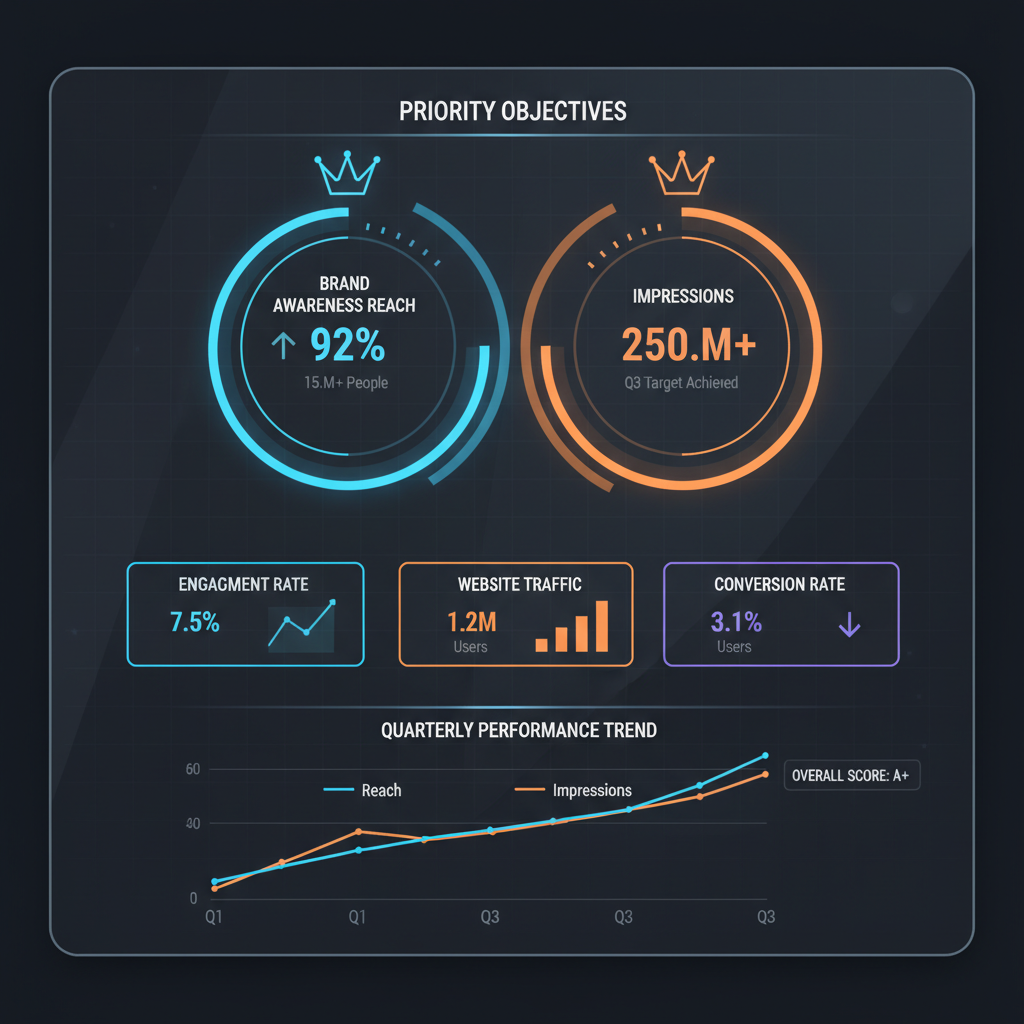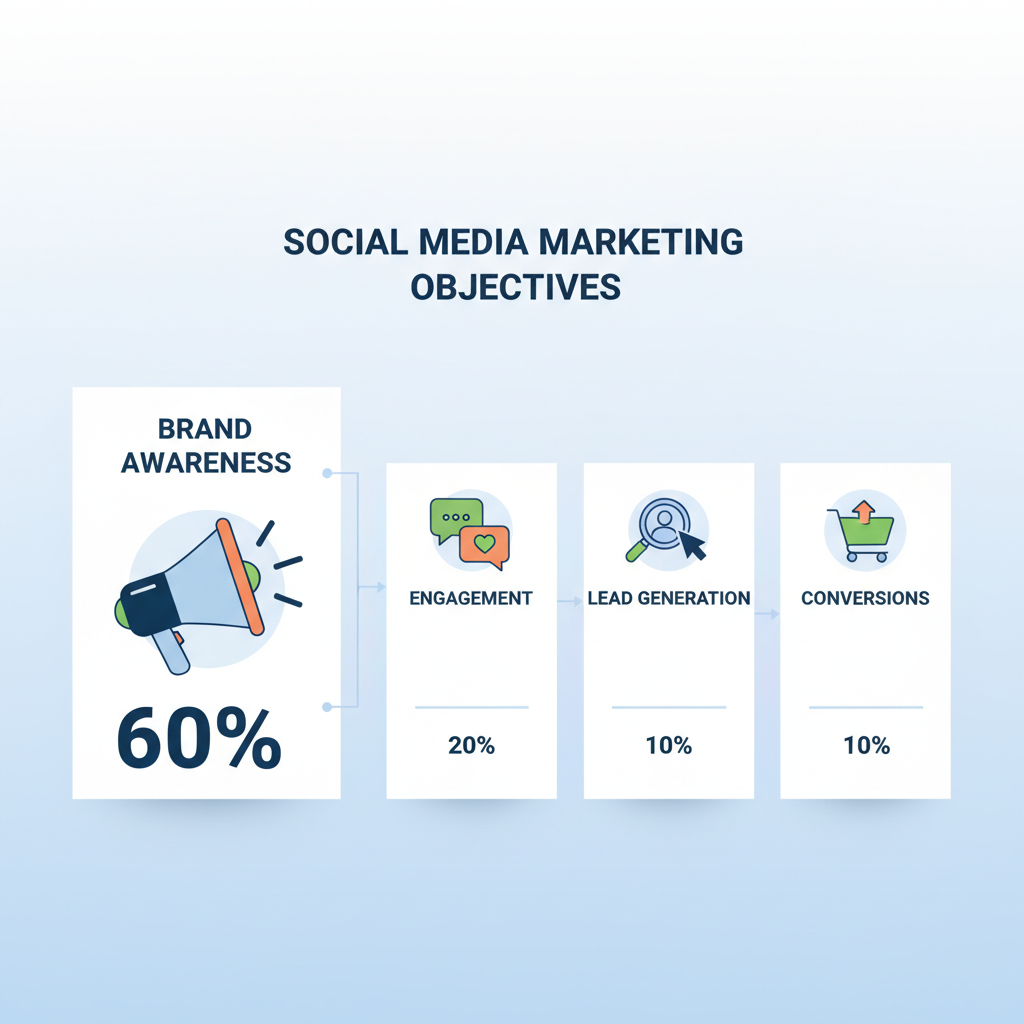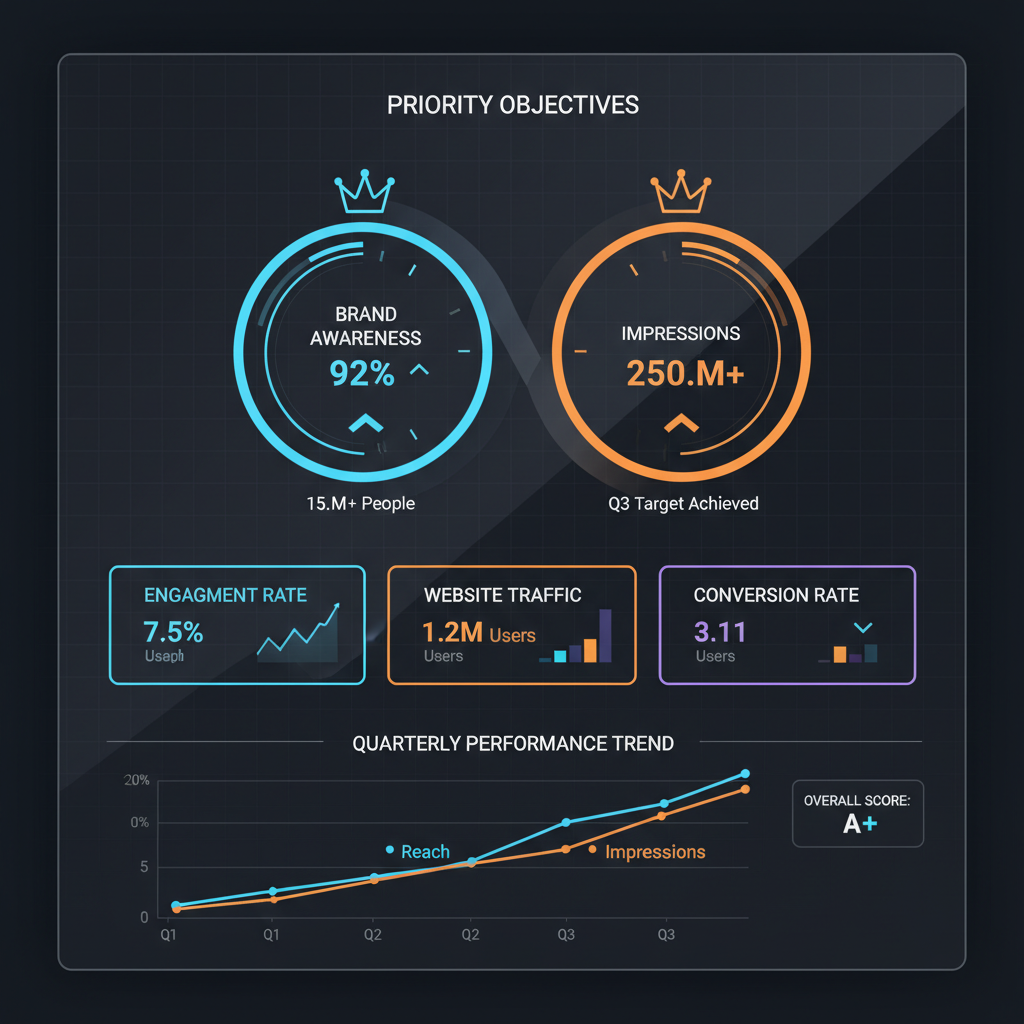Primary Goal of Social Media Marketing for Businesses
Learn how to identify the primary goal of social media marketing for your business, with a focus on brand awareness, engagement, and measurable KPIs.

Introduction to Social Media Marketing and Its Role in Modern Business
Social media marketing has evolved into one of the most powerful tools for driving business growth in the digital age. Whether you’re a startup or an established brand, leveraging channels like Facebook, Instagram, LinkedIn, TikTok, and X (Twitter) offers direct access to your audience. These platforms enable companies to build trust through authentic interactions and create measurable outcomes.
Understanding what is the primary goal of social media marketing for your business is essential—it’s the strategic anchor for every post, ad campaign, and engagement initiative.

---
Defining the "Primary Goal" in a Marketing Context
In marketing, the "primary goal" is the overarching objective that shapes all tactical decisions. It’s the destination guiding campaigns, resource allocation, and performance metrics. While secondary goals can coexist, the primary goal serves as the compass pointing your strategy in the right direction.
Example Scenarios:
- Fashion startup: Focus on brand awareness to reach new audiences.
- SaaS company: Prioritize lead generation to fuel growth.
Identifying this goal for your social media marketing helps determine which KPIs to emphasize and which content approaches will be most effective.
---
Common Objectives in Social Media Marketing
Social media marketing goals typically fall into a few core categories that support different stages of the customer journey.
Brand Awareness
Boosting visibility and recognition among the target audience.
Engagement
Creating community interaction through likes, comments, shares, and mentions.
Lead Generation
Capturing potential customer information for nurturing.
Conversions
Turning prospects into paying customers through targeted campaigns.
| Goal | Definition | Example KPI |
|---|---|---|
| Brand Awareness | Reach and recognition among target audience | Impressions, Reach |
| Engagement | User interaction with content | Comments, Shares, Likes |
| Lead Generation | Capturing potential customer data | Email sign-ups, Form completions |
| Conversions | Turning prospects into paying customers | Purchase rate, Conversion rate |
---
Why Brand Awareness Is Often the Primary Goal
Many marketers agree that brand awareness forms the bedrock for other objectives. Without recognition, engagement, leads, and sales are harder to achieve.
Key reasons include:
- Market Penetration: Awareness initiates the consumer decision process.
- Competitive Differentiation: Visibility gives brands an edge in saturated markets.
- Sustainable Growth: Strong awareness supports multiple campaigns over time.

---
Relationship Between the Primary Goal and Business Stage
The maturity of your business can influence your focus in social media marketing.
Startup Companies:
- Primary focus: Initial brand awareness.
- Tactics: Frequent posting, collaborations, niche targeting.
- Aim: Establish name recognition.
Established Brands:
- Primary focus: Engagement and retention.
- Tactics: Interactive campaigns, loyalty rewards, storytelling.
- Aim: Strengthen customer relationships and advocacy.
---
Measuring Brand Awareness on Social Media
If brand awareness is your primary goal, select the right KPIs to track progress:
- Reach: Number of unique users exposed to your content.
- Impressions: Total content views.
- Mentions: Volume of brand tags and references.
- Share of Voice: Brand conversation share compared to competitors.
- Follower Growth: Audience expansion rate.
Share of Voice Calculation:
Share of Voice (%) = (Brand mentions / Total industry mentions) * 100Monitoring these numbers over time helps assess campaign effectiveness and strategic impact.
---
Integrating Awareness with Other Goals
Brand awareness should connect seamlessly with your other marketing goals:
- Customer Loyalty: Maintain top-of-mind presence so repeat purchases are natural.
- Advocacy: Turn enthusiastic customers into brand promoters.
- Lead Nurturing: Use awareness to guide prospects into conversion funnels.
Strategically sequencing goals from awareness to conversion ensures a smooth audience journey.
---
Examples of Campaigns Focused on Primary Goals
Case Study 1: Nike’s #JustDoIt
- Primary Goal: Emotional brand reinforcement.
- Tactics: Storytelling, celebrity endorsements.
- Outcome: Widespread global recognition.
Case Study 2: Dropbox’s Referral Program
- Primary Goal: Awareness via network effect.
- Tactics: Incentivized sharing for free storage.
- Outcome: Viral adoption among tech-savvy audiences.

---
Aligning Content Strategy With Your Social Media Objective
Your goal should directly influence your content choices:
- Content Types: Choose media formats suited to your goal.
- Tone: Maintain consistency in brand voice.
- Posting Frequency: Quality trumps quantity; sustain reliable schedules.
- Platform Selection: Match audience demographics and campaign style.
Sample Awareness-Focused Content Calendar:
| Day | Content Type | Objective |
|---|---|---|
| Monday | Inspirational Quote + Photo | Create emotional connection |
| Wednesday | Behind-the-scenes Video | Humanize the brand |
| Friday | User-generated Content Feature | Foster engagement & trust |
---
Pitfalls of Unclear Goals and Shifting Priorities
An undefined or constantly shifting primary goal can hinder performance:
- Message Confusion: Inconsistent output undermines brand clarity.
- Effort Dilution: Resources scattered across unrelated aims.
- Measurement Challenges: Difficult to justify ROI without focus.
Always adjust goals deliberately in response to solid data or market changes.
---
Tips for Setting an Effective Primary Goal
- Audit Existing Strategy: Identify gaps in messaging and metrics.
- Know Your Audience: Match goal-setting to user behavior patterns.
- Implement SMART Goals: Keep objectives specific and measurable.
- Regular Tracking: Review KPIs monthly or quarterly.
- Cross-Team Alignment: Synchronize with other departments for cohesive action.
---
Summary and Next Steps for Marketers
When considering what is the primary goal of social media marketing, most brands, especially new market entrants, should emphasize brand awareness as the essential first step. This establishes credibility and visibility before pursuing deeper engagement, leads, or sales.
Takeaways:
- Choose your primary goal according to business maturity and market standing.
- Use clear KPIs to measure progress.
- Structure content around the central objective.
- Maintain consistency to avoid strategy fragmentation.
Action Plan:
- Define your main social media goal for the next 6–12 months.
- Set up a KPI tracking dashboard.
- Align creative and platform choices with that goal.
- Reassess goals periodically based on growth and market trends.
By committing to a singular, measurable objective, your social media marketing can drive intentional growth, engagement, and lasting brand success.



